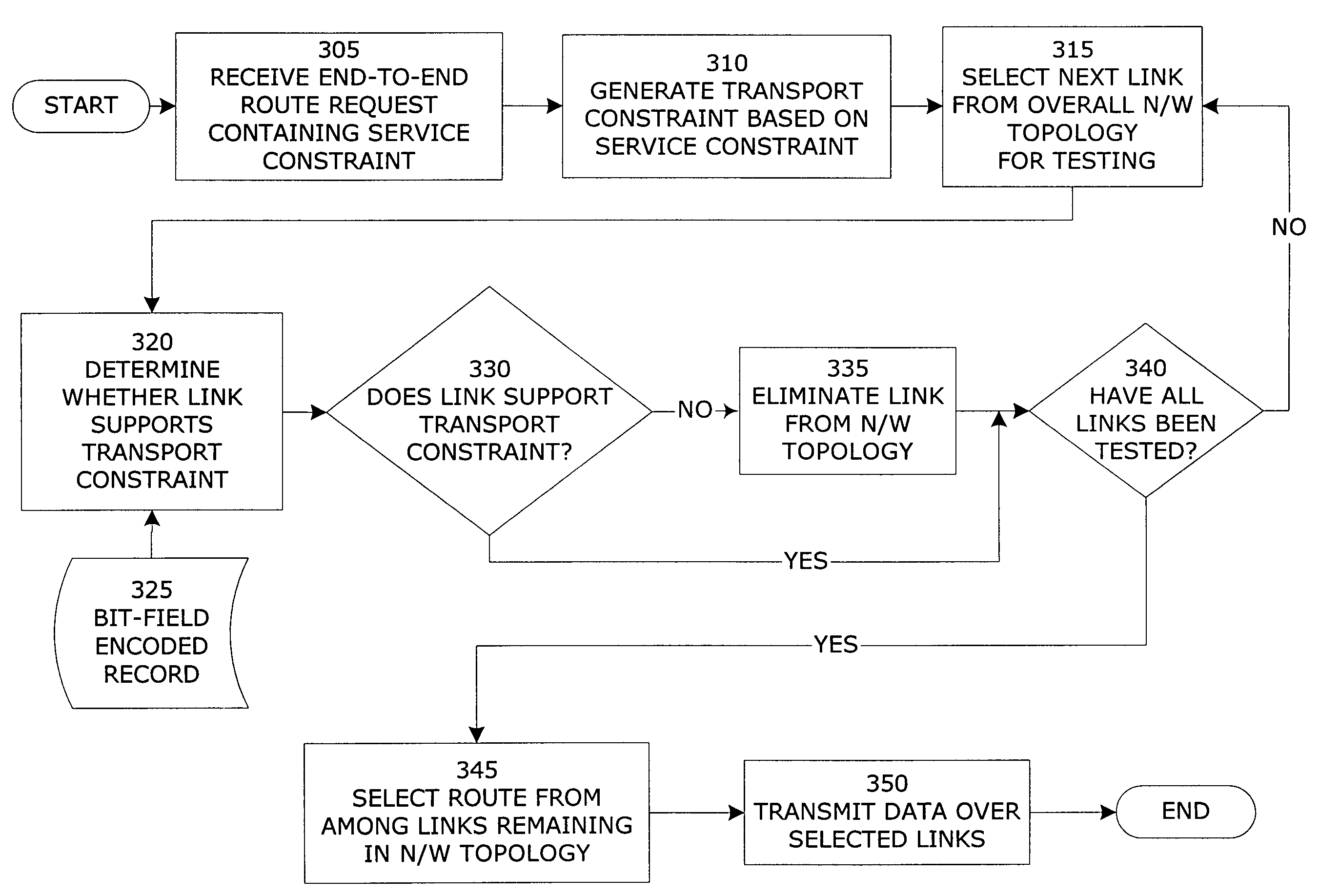Bit-field-encoded resource record for determining a transmission path in a communications network
a communication network and resource record technology, applied in the field of communication networks, can solve the problems of inherently less efficient schemes, pure otns, and inability to convert optical signals to electronic signals during transmission, and achieve the effect of more flexibility in defining
- Summary
- Abstract
- Description
- Claims
- Application Information
AI Technical Summary
Benefits of technology
Problems solved by technology
Method used
Image
Examples
Embodiment Construction
[0033]Reference will now be made in detail to preferred embodiments of the invention, examples of which are illustrated in some of the drawings. Notably, the present invention may be implemented using software, hardware, or any combination thereof, as would be apparent to those of ordinary skill in the art. Therefore, the figures and examples below are not meant to limit the scope of the present invention or its embodiments or equivalents. Although the preferred embodiments are explained and illustrated by references and examples involving optical transport networks (OTNs), optical links, PXCs and DWDM-enabled links and devices, the invention may be advantageously applied in any type of network where it is necessary or desirable to specify, record and disseminate link state characteristics throughout. Therefore, it is understood that the invention finds application in numerous other types of communications networks, such as pure electronic networks, wireless networks, and the like.
[...
PUM
 Login to View More
Login to View More Abstract
Description
Claims
Application Information
 Login to View More
Login to View More - R&D
- Intellectual Property
- Life Sciences
- Materials
- Tech Scout
- Unparalleled Data Quality
- Higher Quality Content
- 60% Fewer Hallucinations
Browse by: Latest US Patents, China's latest patents, Technical Efficacy Thesaurus, Application Domain, Technology Topic, Popular Technical Reports.
© 2025 PatSnap. All rights reserved.Legal|Privacy policy|Modern Slavery Act Transparency Statement|Sitemap|About US| Contact US: help@patsnap.com



